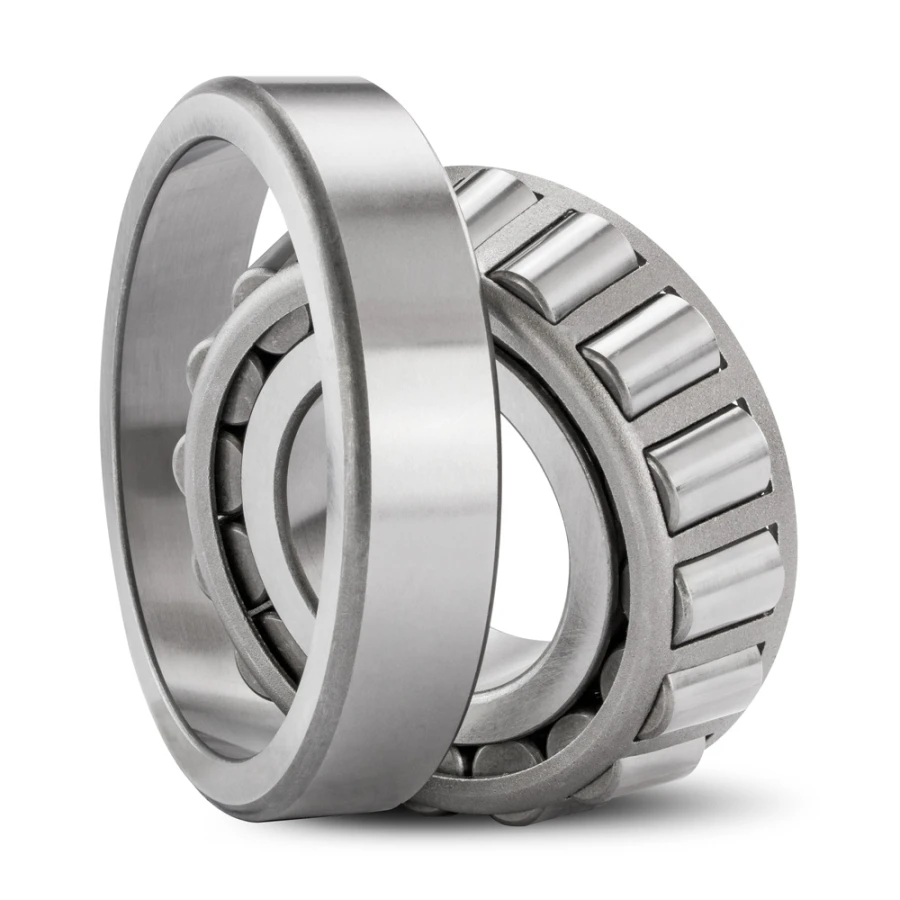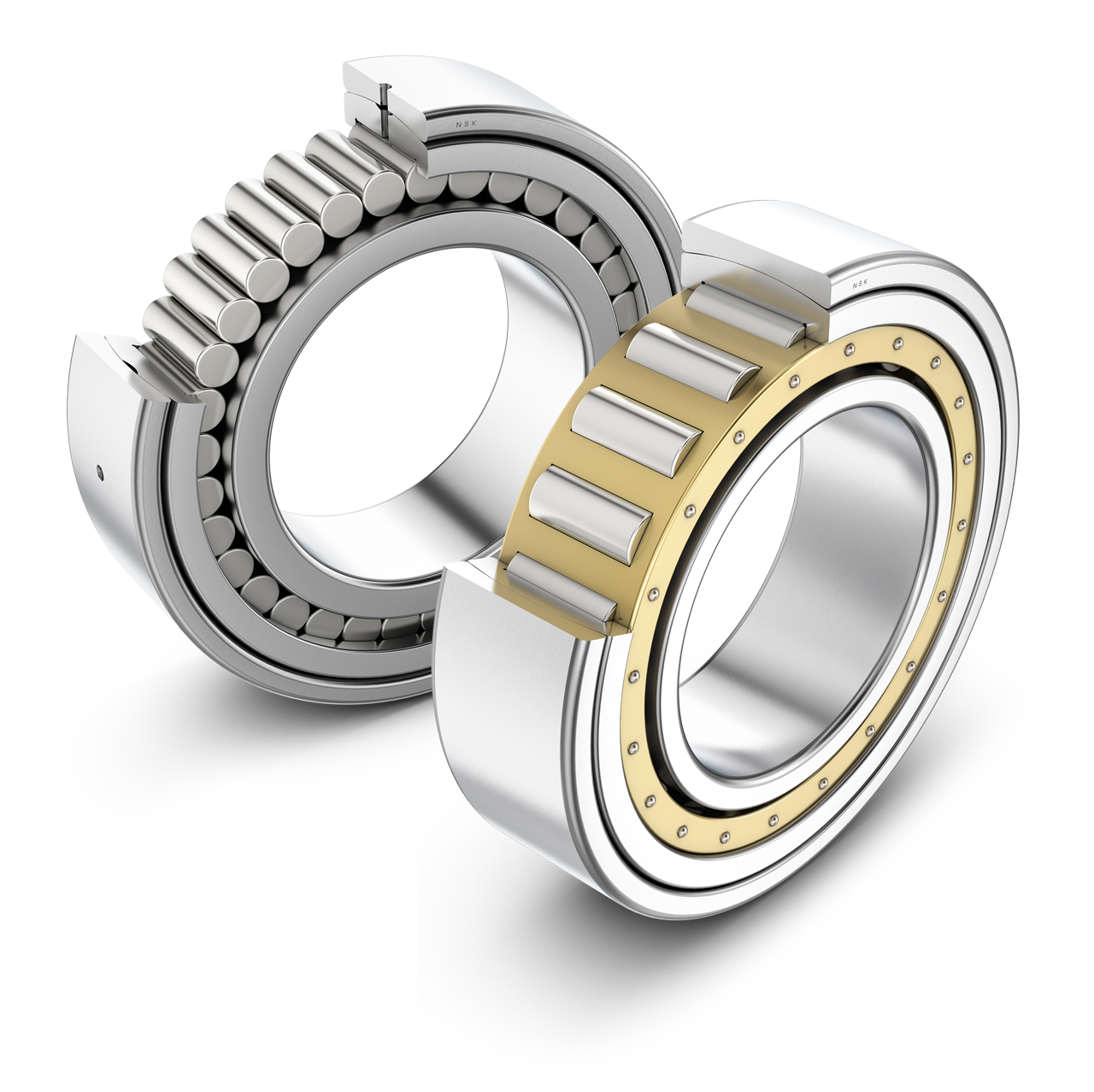What are the Steps for Proper Installation and Alignment of Tapered Roller Bearings?
Proper installation and alignment of tapered roller bearings are essential to ensure optimal performance, reliability, and longevity. Incorrect installation can lead to premature wear, reduced efficiency, and even catastrophic failure. Here are the steps to follow for the correct installation and alignment of tapered roller bearings:
- 1. Clean and Prepare the Components:
Thoroughly clean the bearing components, including the bearing housing, shaft, and associated parts. Remove any dirt, debris, or old lubricant that could impact the bearing’s operation.
- 2. Choose the Correct Tools:
Use appropriate tools and equipment for the installation, such as bearing heaters for controlled heating and proper fit. Avoid using excessive force or striking the bearing directly, as this can damage the components.
- 3. Inspect the Bearings:
Before installation, visually inspect the tapered roller bearings for any signs of damage or defects. Ensure that the rollers and raceways are clean and free from contaminants.
- 4. Apply Lubrication:
Apply the recommended lubricant to the rollers, raceways, and other bearing components. Proper lubrication is crucial for reducing friction, dissipating heat, and preventing premature wear.
- 5. Mount the Bearings:
Mount the bearings onto the shaft or into the housing using appropriate methods. Avoid applying excessive force directly to the bearing components, as this can lead to damage. Utilize specialized tools like bearing pullers and press tools if necessary.
- 6. Ensure Proper Alignment:
Proper alignment is critical to prevent excessive loads, misalignment, and premature wear. Use precision measurement tools to ensure the bearing is aligned with the shaft and housing within specified tolerances.
- 7. Apply Controlled Heat:
If necessary, apply controlled heat to the bearing components to aid in expansion and facilitate proper fit. Ensure that the heat is applied uniformly to avoid distortion or damage.
- 8. Use Adequate Preload:
If specified for your application, apply the appropriate axial preload to eliminate internal clearance and optimize load distribution among the rollers.
- 9. Secure Bearings:
Secure the bearings in place using locking mechanisms, such as locknuts, to prevent unintended movement and ensure proper retention.
- 10. Verify Fit and Function:
After installation, verify that the bearings are properly seated, aligned, and functioning as intended. Rotate the shaft to ensure smooth operation and absence of unusual noise or vibration.
- 11. Document the Installation:
Keep a record of the installation process, including alignment measurements, preload values, and any relevant notes. This documentation can aid in future maintenance and troubleshooting.
Proper installation and alignment are essential to achieving optimal performance and longevity from tapered roller bearings. Following these steps ensures that the bearings operate smoothly and reliably within their intended applications.
How do cylindrical roller bearings perform in high-speed or high-temperature environments?
Cylindrical roller bearings are designed to perform reliably in high-speed or high-temperature environments, although their performance may be influenced by various factors. Let’s explore how cylindrical roller bearings perform under these conditions:
- High-Speed Environments:
In high-speed environments, cylindrical roller bearings are subjected to increased centrifugal forces and higher operating temperatures. To accommodate these conditions, several design features are employed:
- Cage Design:
Cylindrical roller bearings intended for high-speed applications often feature optimized cage designs. The cage, or retainer, holds the cylindrical rollers in position and prevents excessive friction and heat generation. Cages made of lightweight materials such as phenolic resin or engineered plastics help reduce inertia and minimize cage wear at high speeds.
- Roller and Raceway Geometry:
The roller and raceway profiles are designed to minimize sliding friction and ensure proper roller guidance. Special attention is given to the surface finish and precision of these components to reduce friction and minimize heat generation. Additionally, high-speed cylindrical roller bearings may have specific modifications, such as optimized roller end profiles and surface coatings, to further enhance their performance in high-speed applications.
- Lubrication:
Proper lubrication is crucial in high-speed environments to reduce friction, dissipate heat, and prevent premature wear. High-speed cylindrical roller bearings often require lubricants with specific properties, such as low viscosity and excellent thermal stability, to ensure effective lubrication under high-speed conditions. Lubrication methods, such as oil-air lubrication or oil mist lubrication, may be employed to provide sufficient lubricant supply to the bearing at high speeds.
- High-Temperature Environments:
When operating in high-temperature environments, cylindrical roller bearings face challenges related to elevated temperatures and potential thermal expansion. To address these challenges, the following considerations are taken into account:
- Bearing Materials:
High-temperature cylindrical roller bearings are often made from heat-resistant materials that can withstand elevated temperatures without compromising their mechanical properties. Common materials include high-temperature steels, heat-resistant alloys, or ceramics. These materials offer improved dimensional stability and resistance to thermal expansion, ensuring the bearing’s performance and longevity.
- Lubrication:
Proper lubrication becomes even more critical in high-temperature environments. Lubricants with high-temperature stability, such as synthetic oils or greases specifically formulated for high temperatures, are used to maintain adequate lubrication properties and prevent premature lubricant degradation. Lubrication intervals may need to be adjusted to ensure sufficient lubricant replenishment under high-temperature conditions.
- Clearance and Preload:
In high-temperature environments, the bearing’s internal clearance or preload may be adjusted to compensate for thermal expansion. Proper clearance or preload selection helps maintain the desired operating conditions and prevents excessive bearing play or preload loss due to thermal effects.
It’s important to note that the specific performance of cylindrical roller bearings in high-speed or high-temperature environments can vary depending on factors such as the bearing size, design, operating conditions, and the presence of additional cooling or heat dissipation measures. Consulting bearing manufacturers’ recommendations and considering the application requirements are crucial for selecting the appropriate cylindrical roller bearings for high-speed or high-temperature applications.
What are the key advantages of using cylindrical roller bearings in various applications?
Cylindrical roller bearings offer several key advantages that make them a preferred choice in various applications. Let’s explore the significant benefits of using cylindrical roller bearings:
- High Radial Load Capacity:
Cylindrical roller bearings are specifically designed to handle high radial loads. Their cylindrical roller arrangement and large contact area with the raceways enable them to distribute loads evenly along the rollers’ length. This characteristic allows cylindrical roller bearings to support heavy machinery components and handle substantial radial forces, making them suitable for applications where the primary load is radial in nature.
- Moderate Thrust Load Capacity:
While their primary function is to carry radial loads, cylindrical roller bearings can also accommodate moderate axial loads. The arrangement of the cylindrical rollers and their contact angle with the raceways enables these bearings to handle limited thrust loads. However, it’s important to note that for applications with predominantly axial loads, other types of bearings, such as thrust bearings, may be more suitable.
- High-Speed Capability:
Cylindrical roller bearings can operate at high speeds, depending on their design and internal clearance. Factors such as cage material, roller design, and lubrication play a role in determining the maximum allowable speed. The ability to operate at high speeds makes cylindrical roller bearings suitable for applications that require efficient and reliable rotation, such as electric motors, gearboxes, and machine tool spindles.
- Application Versatility:
Cylindrical roller bearings find wide applications in various machinery and equipment. They are commonly used in rotating machinery, such as electric motors, gearboxes, pumps, and compressors. Cylindrical roller bearings are also utilized in industries such as automotive, aerospace, construction, and mining, where they support heavy loads and provide rotational motion in critical components. The versatility of cylindrical roller bearings makes them a preferred choice across different sectors.
- Alignment and Compensation:
Cylindrical roller bearings have the ability to accommodate slight misalignments between the inner and outer rings. This feature allows for easier installation and helps compensate for mounting errors or shaft deflections during operation. The axial displacement capability of cylindrical roller bearings can also assist in thermal expansion or contraction of the shaft and housing. This ability to handle misalignment and axial displacement contributes to the overall reliability and longevity of machinery.
- Durability and Longevity:
Cylindrical roller bearings are designed to withstand heavy loads, shocks, and vibrations encountered in various applications. They are manufactured with high-quality materials and undergo stringent quality control processes to ensure durability and reliability. Proper lubrication and maintenance further enhance their longevity and performance, making cylindrical roller bearings a dependable choice for demanding industrial environments.
In summary, cylindrical roller bearings offer significant advantages in terms of high radial load capacity, moderate thrust load capacity, high-speed capability, application versatility, alignment and compensation capabilities, and durability. These advantages make cylindrical roller bearings well-suited for a wide range of machinery applications, contributing to efficient operation, reduced downtime, and extended service life.
editor by CX 2024-04-23




